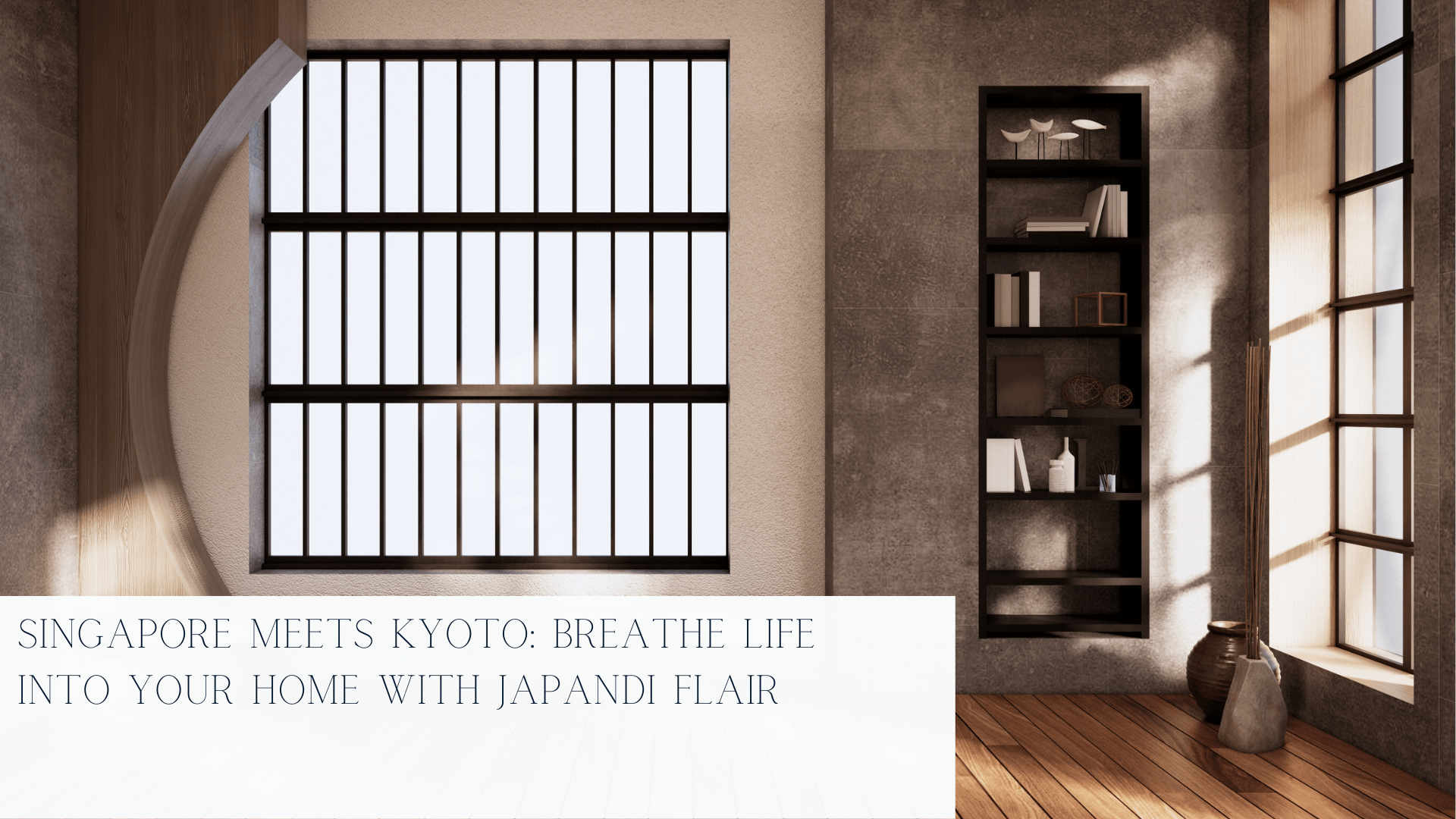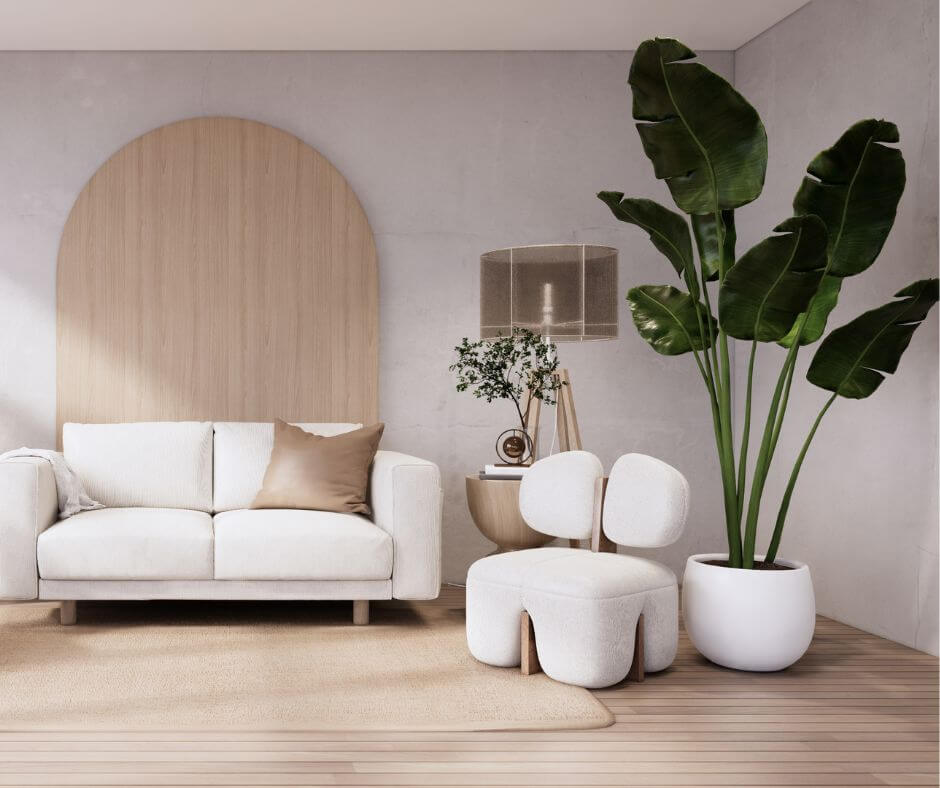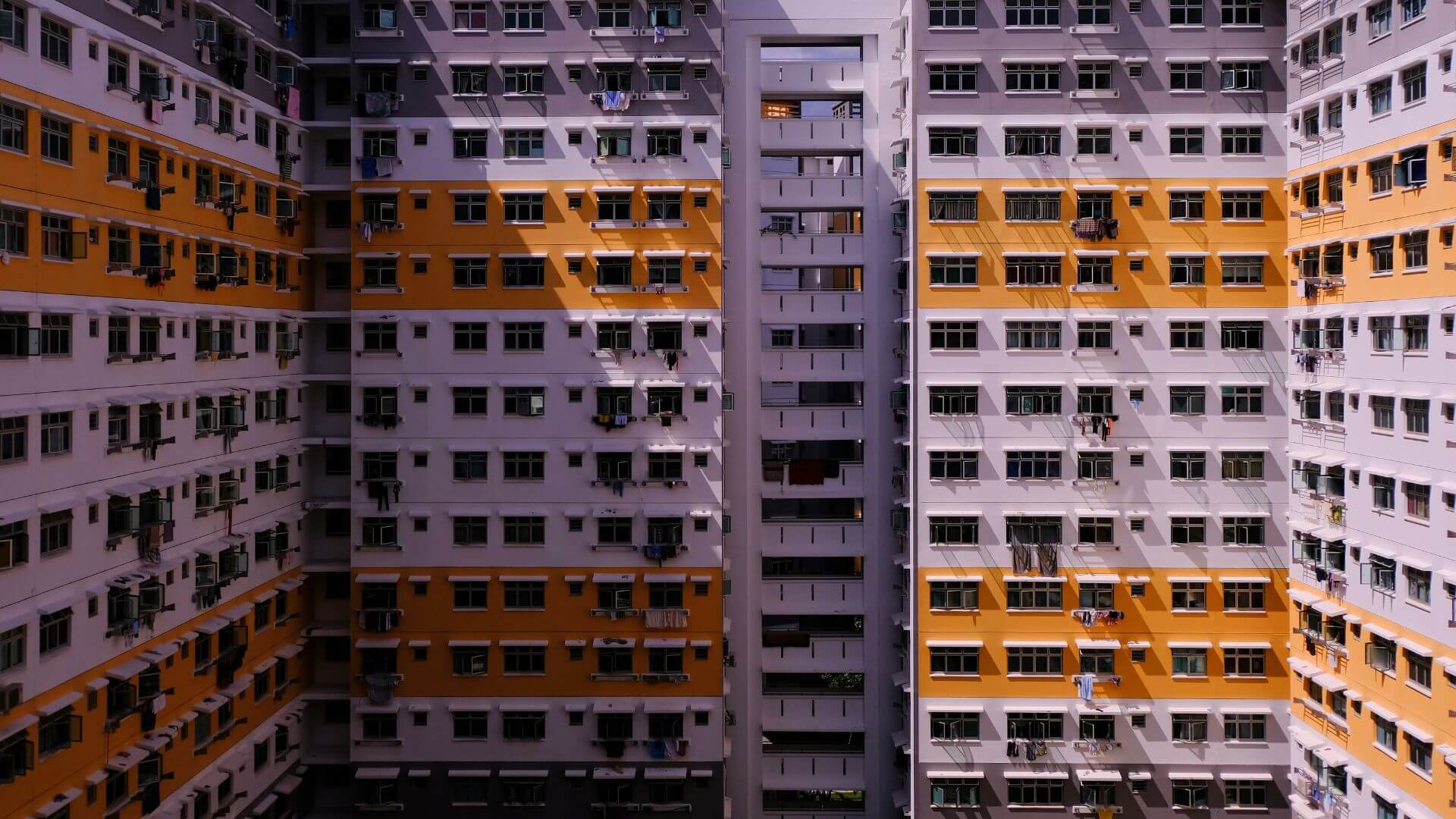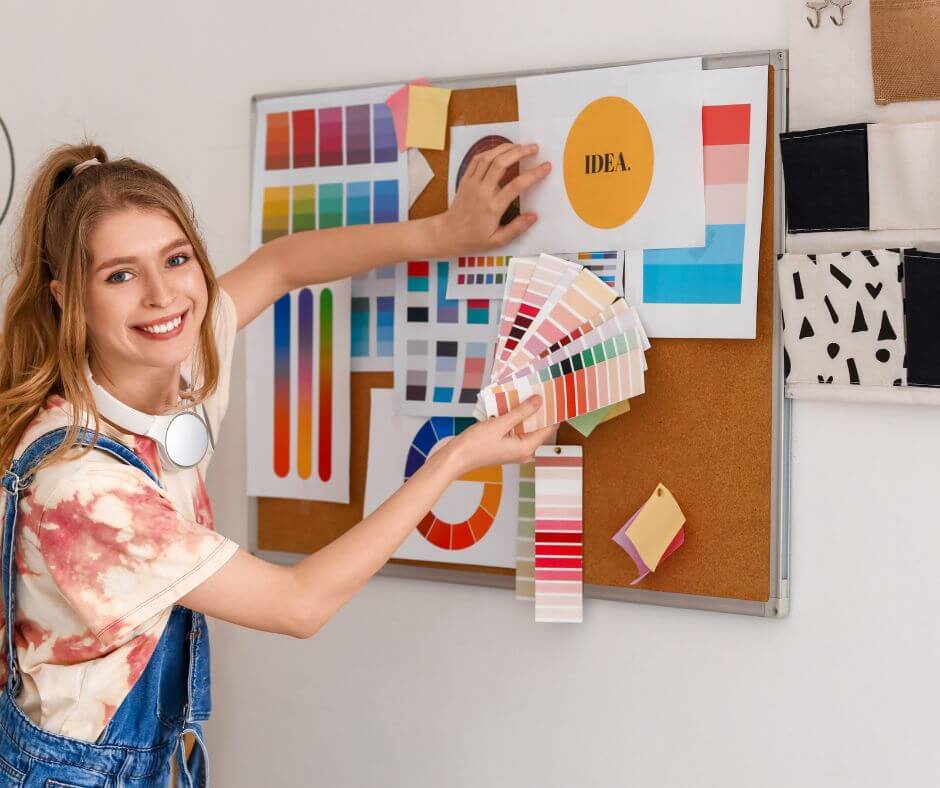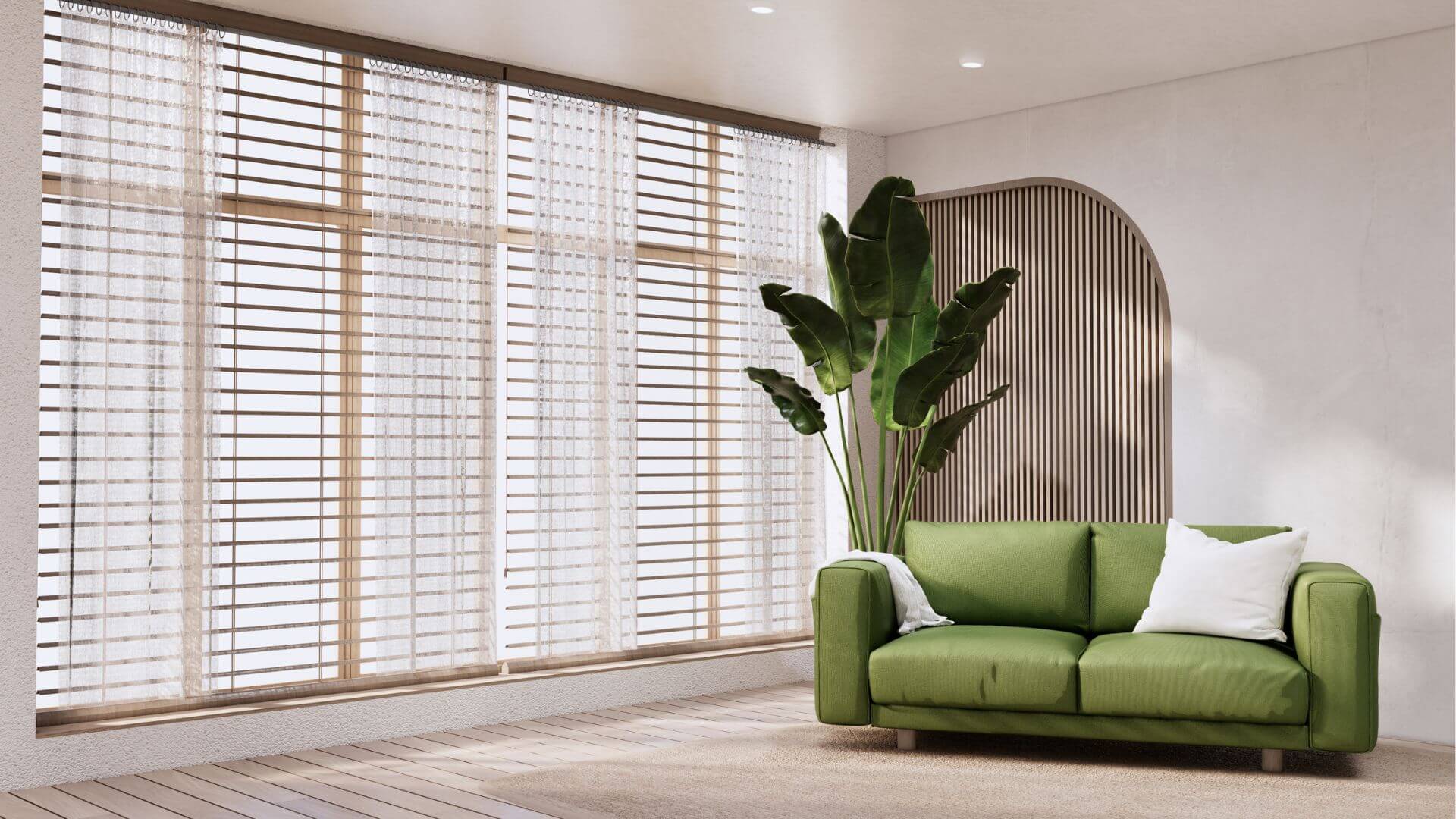Wabi-Sabi Philosophy
The Japanese notion of wabi-sabi is integral to Japandi’s welcoming aesthetic. Wabi-sabi finds beauty and depth in things that seem simple, weathered, or incomplete. It embraces natural flaws as reminders of life’s imperfect, transient nature.
In Japandi interiors, you see nods to wabi-sabi in items left purposefully unfinished, like wood furnishings with irregular shapes, cracks, or knots. Concrete or clay surfaces may be gently textured but left in their organic state.
The use of salvaged, reclaimed, and vintage items also ties into appreciating existing beauty amidst imperfections wrought by time. These unrefined textures and forms create visual interest and convey authenticity at the same time.
Hygge Concept
The Japandi style also weaves in the Danish notion of “hygge”, which revolves around contentment, comfort, and cosiness.
Tactile natural materials like nubby linen, wooden surfaces, woven rattan, and textured ceramics invite you to stop and appreciate their nuances through touch. Plush pillows, soft rugs, and layered textiles enhance the enveloping, welcoming vibe. Custom-built seating nooks give inhabitants a hideaway to snuggle into.
Lighting is designed for mood-over-task functionality, a departure from the starkly minimalist Scandinavian style. Candles, warmth-giving fireplaces, and views of greenery also foster “hygge”. The overall ambience supports meaningful connections instead of conspicuous consumption.
Natural Materials
Wood is the undisputed king when it comes to Japandi’s preferred materials. Light-coloured sustainable woods like oak, maple, and ash are shaped into airy furnishings with clean lines. Wood panelling lent warmth to walls and ceilings. Wide planked floors underfoot feel solid but comforting.
Beyond wood, various natural materials also add depth and textural interest. Examples are:
-
-
- Stone surfaces
- Woven rattan cabinetry
- Shoji screens
- Handmade paper wall dividers
- Cotton/linen bedding and tableware
Each material ages gracefully, avoiding the need for jarring replacements. Stone sculptures or ceramics with irregular shapes nod to wabi-sabi. The natural materials preferred in Japandi interiors bring us closer to nature even while indoors.
Soothing Neutral Tones
Instead of vibrant colours, the Japandi style relies on neutral hues: off-whites, warm light browns, slate greys, and organic greens. These quiet backdrops soothe inhabitants without starkness. Occasional black accents provide pleasing contrast for focal points. Japandi palettes incorporate more saturated earth tones than minimalist Scandinavian schemes anchored by white.
But darker shames are still balanced out by airy whites, as seen in shoji screens, linen bedding, and oak furnishings. Touches of greenery also enliven the canvas. As uniquely crafted ceramics, wood grain finishes and textured surfaces add inherent variation within neutral tones. The colours whisper instead of shout, providing a serene setting to display treasured stoneware or vintage linens to the full visual effect.

